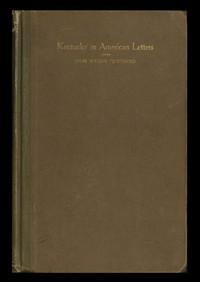|
|
Read this ebook for free! No credit card needed, absolutely nothing to pay.Words: 122451 in 21 pages
This is an ebook sharing website. You can read the uploaded ebooks for free here. No credit cards needed, nothing to pay. If you want to own a digital copy of the ebook, or want to read offline with your favorite ebook-reader, then you can choose to buy and download the ebook.

: Het Leven der Dieren: Deel 2 Hoofdstuk 10: De Stootvogels by Brehm Alfred Edmund - Animals@FreeBooksWed 07 Jun, 2023 THE NUTMEG. DR. ALBERT SCHNEIDER. Northwestern University School of Pharmacy. The nutmeg is the spice obtained from a medium-sized evergreen tree reaching a height of from twenty-five to forty feet. This tree is dioecious, that is the male flowers and the female flowers are borne upon different plants. The male flower consists of a column of from six to ten stamens enclosed by a pale yellow tubular perianth. The female flowers occur singly, in twos or threes, in the axils of the leaves; they also have a pale yellow perianth. The ovary has a single seed which finally matures into the nutmeg and mace. The mature seed is about one and one-fourth inches long and somewhat less in transverse diameter, so that it is somewhat oval in outline. It is almost entirely enveloped by a fringed scarlet covering known as arillus or arillode . The entire fruit, nut, mace, and all, is about the size of a walnut and like that nut has a thick outer covering, the pericarp, which is fibrous and attains a thickness of about half an inch. At maturity the pericarp splits in halves from the top to the base or point of attachment. The leaves of the nutmeg tree are simple, entire, and comparatively large. The trees are produced from seeds. After sprouting the plants are transferred to pots, in which they are kept until ready for the nutmeg plantation. Transferring from the pots to the soil must be done carefully, as any considerable injury to the terminal rootlets kills the plants. A rich, loamy soil with considerable moisture is required for the favorable and rapid growth of the plants. They thrive best in river valleys, from sea-level to 300 and 400 feet or even to an elevation of 2,000 feet. The trees are usually planted twenty-five or thirty feet apart, in protected situations, so as to shelter them from strong winds and excessive sunlight. The trees do not yield a crop until about the ninth year and continue productive for seventy or eighty years. Each tree yields on an average about ten pounds of nutmegs and about one pound of mace annually. If the trees are well cared for and the soil well fertilized, the yield is much greater, even tenfold. As already stated the nutmeg plant is dioecious. A seed may therefore develop into a male or female plant; if a male plant it will of course not produce nutmegs. The only way to learn whether it is one or the other is to wait until the first flowers are formed during the fifth or sixth year. The planter does, however, not sit by and wait; he simply grafts the young shoots with branches of the female tree. Some male trees, about one to twenty female trees, are allowed to mature in order that pollination, by insects, may be possible, as without pollination and subsequent fertilization the seed could not develop. The tree bears fruit all the year round, so that nutmegs may be collected at all times. It is, however, customary to collect two principal crops, one during October, November, and December, and another during April, May, and June. The nuts are picked by hand or gathered by means of long hooks and the thick pericarp removed. The red arillus is also carefully removed and flattened between blocks of wood so as to reduce the danger of breaking as much as possible. Mace and nuts are then dried separately. The nuts are placed upon hurdles for several weeks until the kernels, nutmegs, rattle inside of the thin, tasteless, and odorless hard shell. This shell is now carefully broken and removed; the worm-eaten nutmegs are thrown away and the sound ones are rolled in powdered lime and again dried for several weeks. Generally the drying is done over a smoldering fire so that the nuts are really smoke dried. For shipment they are packed in air-tight boxes which have been smoked and dusted with lime on the inside. Liming gives the nuts a peculiar mottled appearance and tends to destroy parasites which may be present. Banda supplies by far the most nutmegs at the present time. Penang nutmegs are of excellent quality and are always placed upon the market unlimed, but they are frequently limed subsequently in foreign ports and markets. Singapore nutmegs are usually unlimed. Nutmegs are generally designated by the name of the country from which they are obtained, as Dutch or Batavian, Sumatra, Penang, Singapore, Java, and Banda nutmegs. The principal use of nutmeg is that of a spice, although not so commonly employed or so well liked as some other spices. It contains a fat which forms the nutmeg butter; this is an unctuous solid substance of an orange-brown or yellowish-brown color, with the odor and taste of nutmeg. This fat is used as a stimulating application in rheumatism, sprains, and paralysis. Nutmegs also contain some volatile oil, which is said to be poisonous; at least some persons are very susceptible to the effects of the volatile oil of nutmeg. In this connection it might be stated that the frequent and long-continued use of spices is injurious, producing dyspepsia, functional heart trouble, and nervousness, and seems to have a special action upon the liver, causing an excessive development of connective tissue and a reduction in the functional activity of the liver cells: "Nutmeg liver" is a condition resulting from passive venous congestion of that organ, and refers to its mottled or nut-meggy appearance only. Mace is comparatively rich in volatile oil. Nutmeg and mace are both extensively employed as condiments. They are frequently given in the form of a powder to stimulate and aid digestion. Nutmeg flavor consists of nutmeg, oil of nutmeg, and alcohol. Mace-ale is ale sweetened and spiced with mace. It is stated that whole nutmegs have been adulterated with wooden imitations. Connecticut is known as the Wooden Nutmeg State because it is facetiously said that such nutmegs were manufactured there. Description of plate: Free books android app tbrJar TBR JAR Read Free books online gutenberg More posts by @FreeBooks
: A System of Easy Lettering by Cromwell John Howard - Lettering; Alphabets@FreeBooksWed 07 Jun, 2023

: One of Cleopatra's Nights and Other Fantastic Romances by Gautier Th Ophile Hearn Lafcadio Translator - Short stories; French fiction Translations into English@FreeBooksWed 07 Jun, 2023

: L'Illustration No. 0035 28 Octobre 1843 by Various - Illustrated periodicals France L'Illustration@FreeBooksWed 07 Jun, 2023
|
Terms of Use Stock Market News! © gutenberg.org.in2025 All Rights reserved.






